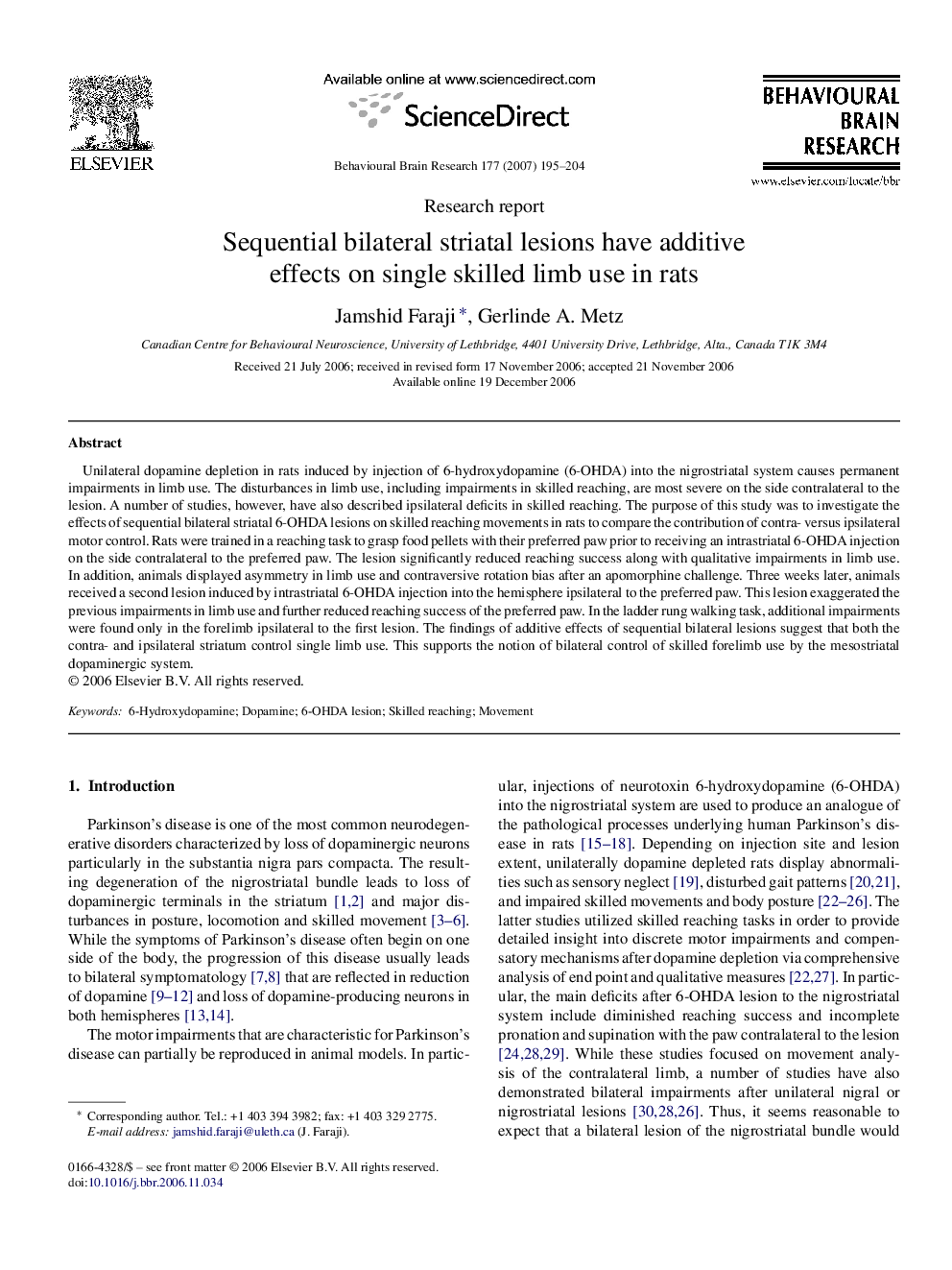| Article ID | Journal | Published Year | Pages | File Type |
|---|---|---|---|---|
| 4315974 | Behavioural Brain Research | 2007 | 10 Pages |
Unilateral dopamine depletion in rats induced by injection of 6-hydroxydopamine (6-OHDA) into the nigrostriatal system causes permanent impairments in limb use. The disturbances in limb use, including impairments in skilled reaching, are most severe on the side contralateral to the lesion. A number of studies, however, have also described ipsilateral deficits in skilled reaching. The purpose of this study was to investigate the effects of sequential bilateral striatal 6-OHDA lesions on skilled reaching movements in rats to compare the contribution of contra- versus ipsilateral motor control. Rats were trained in a reaching task to grasp food pellets with their preferred paw prior to receiving an intrastriatal 6-OHDA injection on the side contralateral to the preferred paw. The lesion significantly reduced reaching success along with qualitative impairments in limb use. In addition, animals displayed asymmetry in limb use and contraversive rotation bias after an apomorphine challenge. Three weeks later, animals received a second lesion induced by intrastriatal 6-OHDA injection into the hemisphere ipsilateral to the preferred paw. This lesion exaggerated the previous impairments in limb use and further reduced reaching success of the preferred paw. In the ladder rung walking task, additional impairments were found only in the forelimb ipsilateral to the first lesion. The findings of additive effects of sequential bilateral lesions suggest that both the contra- and ipsilateral striatum control single limb use. This supports the notion of bilateral control of skilled forelimb use by the mesostriatal dopaminergic system.
